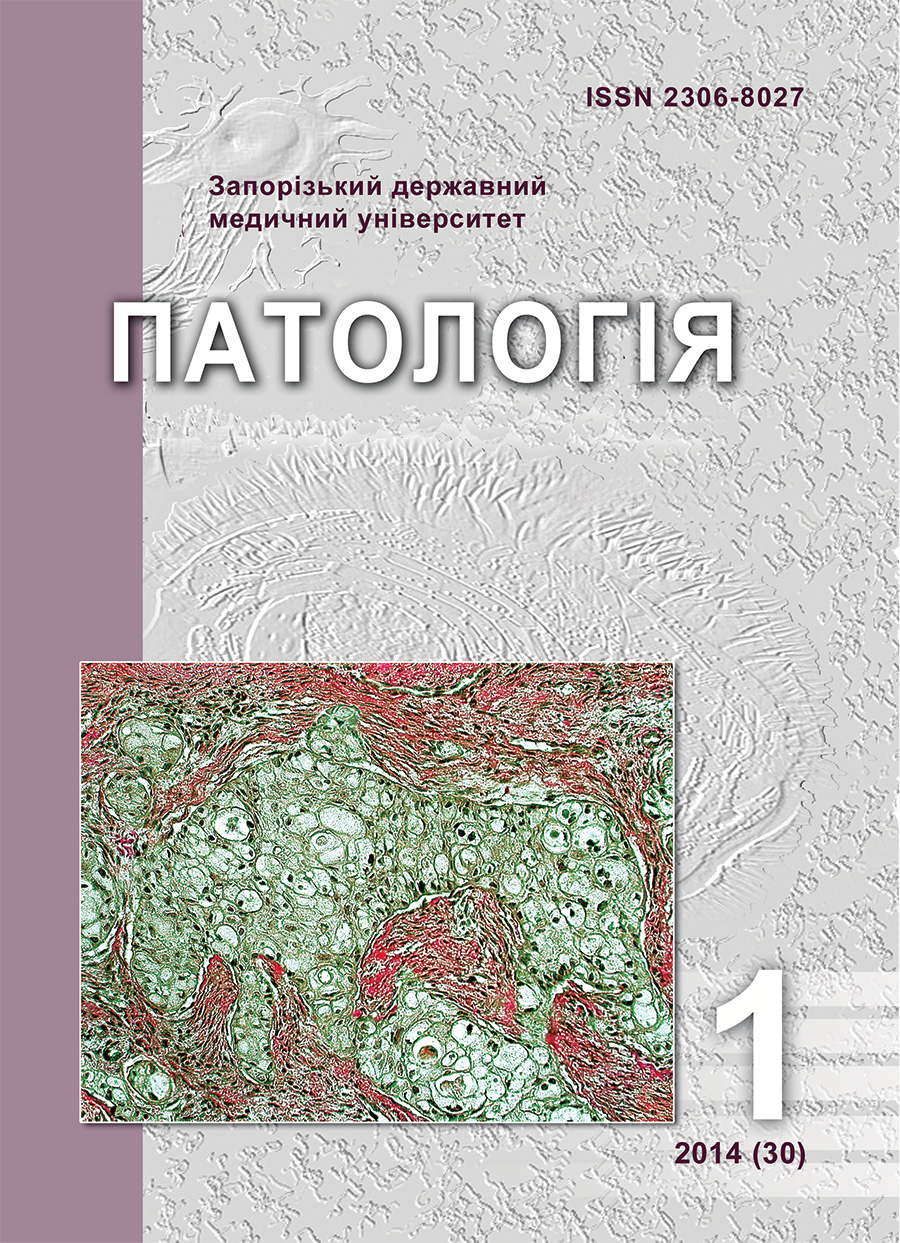Regulation of extracellular matrix In patients with Q-wave myocardial infarction after thrombolytic therapy
DOI:
https://doi.org/10.14739/2310-1237.2014.1.25585Keywords:
matrix metalloproteinase, myocardial infarction, heart aneurysmAbstract
Aims. In order to study the levels of matrix metlloproteinase-9, tissue inhibitor of metalloproteinase-1, intracardiac hemodynamics, frequency of acute cardiac aneurysm development in patients with Q-wave myocardial infarction after thrombolysis, 74 patients were examined.
Methods and results. All participants underwent clinical and laboratory examination, echocardiography, determination of serum levels of matrix metlloproteinase-9 and tissue inhibitor of metalloproteinase-1.
Conclusion. Patients, who got thrombolysis in 6 to 12 hours period, had excessive activation of the proteolysis system on the background of relative deficit of tissue inhibitor of metalloproteinase-1, the prevalence of dilatation and restrictive diastolic dysfunction, cardiac aneurysm was detected frequently and thrombogenic potential was higher.
References
Berezin A.E., Samura T.A. Prognostic value of biochemical stress markers in patients with Q-myocardial infarction. Results of prospective study. Ukr Med Chasopys 2011; 6(86): 100-103
Dzyak G.V., Koval E.A., Ivanov A.P., Shevcova A.I. Type of fibronectin degradation as new additional risk factor of thrombotic and hemorrhagic complications of acute Q-wave myocardial infarction. Serce i sudyny 2005; 1(17): 13-18
Kalinkin M.N., Solovyov V.A., Shinkarenko T.V., Egorova E.N., Mazur E.S. Matrix metalloproteinases and their role in pathogenesis of cardiovascular diseases. Vestnik TvGU. Seriya «Biologiya i ekologiya» 2011; 12(22): 64-76
Celuiko V.I., Losovaia T.A., Knysh D.A., Dernovaia O.V. Peculiarities of hemodynamic and diastolic function indexes in patients with myocardial infarction of posterior wall of left ventricle with involvement of right ventricle. Ukrinskii kardiologichnyi zhurnal 2012; 6:35-43
Shliahto E.V., Aleshina G.M., Moiseeva O.M., Goncharova N.S. Matrix metalloproteinases: signification inmyocardium remodeling in valvular heart defects. Kardiologiia 2007; 12: 49-52
Blankenberg S.Rupprecht HJ. Poirier O. et al. Plasma concentrations and genetic variation of matrix metalloproteinase-9 and prognosis of patients with cardiovascular disease. Circulation 2003;107:1579–85
Ferroni P.Basili S. Martini F. et al. Serum metalloproteinase-9 levels in patients with coronary artery disease: a novel marker of inflammation. J InvestigMed 2003;51:295–300
Grines CL, Serruys P, O'Neill WW: Fibrinolytic therapy: Is it a treatment of the past? Circulation 2003; 107:2538
Kai H. Ikeda H. Yasukawa H.et al. Peripheral blood levels of matrix metalloproteases-2 and -9 are elevated in patients with acute coronary syndromes. J AmCollCardiol 1998;32: 368–72
Mickleborough L.L., Carson S., Ivanov J. Repair of dyskinetic or akinetic left ventricular aneurysm: results obtained with a modified linear closure. J. Thorac. Cardiovasc. Surg. 2001; 121: 675-682
Downloads
How to Cite
Issue
Section
License
Authors retain copyright and grant the journal right of first publication with the work simultaneously licensed under a Creative Commons Attribution License that allows others to share the work with an acknowledgement of the work's authorship and initial publication in this journal.


